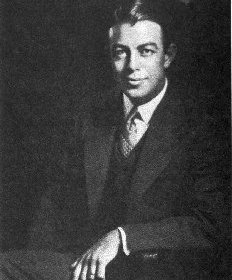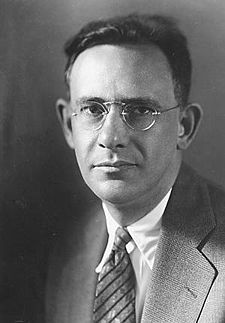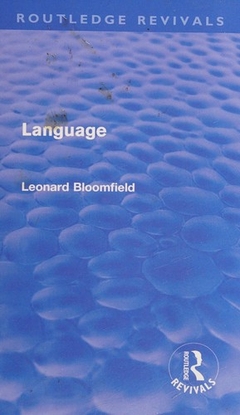
Benjamin Lee Whorf was an American linguist and fire prevention engineer. He is known for "Sapir–Whorf hypothesis," the idea that differences between the structures of different languages shape how their speakers perceive and conceptualize the world. This principle has been named after him and his mentor Edward Sapir, which was initially called linguistic relativity by Whorf because he saw the idea as having implications similar to Einstein’s principle of physical relativity. The idea, however, follows from post-Hegelian 19th-century philosophy, especially from Wilhelm von Humboldt; and from Wilhelm Wundt's Völkerpsychologie.

Edward Sapir was an American anthropologist-linguist, who is widely considered to be one of the most important figures in the development of the discipline of linguistics in the United States.
In phonology and linguistics, a phoneme is a unit of sound that can distinguish one word from another in a particular language.
Phonology is the branch of linguistics that studies how languages or dialects systematically organize their sounds or, for sign languages, their constituent parts of signs. The term can also refer specifically to the sound or sign system of a particular language variety. At one time, the study of phonology related only to the study of the systems of phonemes in spoken languages, but may now relate to any linguistic analysis either:
The hypothesis of linguistic relativity, also known as the Sapir–Whorf hypothesis, the Whorf hypothesis, or Whorfianism, is a principle suggesting that the structure of a language influences its speakers' worldview or cognition, and thus people's perceptions are relative to their spoken language. Research has produced positive empirical evidence supporting linguistic relativity, and this hypothesis is provisionally accepted by many modern linguists.
An isolating language is a type of language with a morpheme per word ratio close to one, and with no inflectional morphology whatsoever. In the extreme case, each word contains a single morpheme. Examples of widely spoken isolating languages are Igbo in West Africa and Vietnamese in Southeast Asia.

Morris Swadesh was an American linguist who specialized in comparative and historical linguistics.
Americanist phonetic notation, also known as the North American Phonetic Alphabet (NAPA), the Americanist Phonetic Alphabet or the American Phonetic Alphabet (APA), is a system of phonetic notation originally developed by European and American anthropologists and language scientists for the phonetic and phonemic transcription of indigenous languages of the Americas and for languages of Europe. It is still commonly used by linguists working on, among others, Slavic, Uralic, Semitic languages and for the languages of the Caucasus and of India; however, Uralists commonly use a variant known as the Uralic Phonetic Alphabet.

The Yana language was formerly spoken by the Yana people, who lived in north-central California between the Feather and Pit rivers in what is now the Shasta and Tehama counties. The last speaker of the southernmost dialect, which is called Yahi, was Ishi, who died in 1916. When the last fluent speaker(s) of the other dialects died is not recorded. Yana is fairly well documented, mostly by Edward Sapir.

Takelma was the language spoken by the Latgawa and Takelma people and Cow Creek band of Upper Umpqua. It was first extensively described by Edward Sapir in his graduate thesis, The Takelma Language of Southwestern Oregon. The last fluent speaker of Takelma, with whom Sapir worked while writing about the language, was Frances Johnson (Gwísgwashãn). A dictionary from English to Takelma is currently being created in the hopes it can be revived.
The Jabo language is a Kru language spoken by the Jabo people of Liberia. They have also been known in the past as the Gweabo.
Timeline of anthropology, 1920–1929
George Leonard Trager was an American linguist. He was the president of the Linguistic Society of America in 1960.
Sociocultural linguistics is a term used to encompass a broad range of theories and methods for the study of language in its sociocultural context. Its growing use is a response to the increasingly narrow association of the term sociolinguistics with specific types of research involving the quantitative analysis of linguistic features and their correlation to sociological variables. The term as it is currently used not only clarifies this distinction, but highlights an awareness of the necessity for transdisciplinary approaches to language, culture and society.
Cultural emphasis is an important aspect of a culture which is often reflected though language and, more specifically, vocabulary. This means that the vocabulary people use in a culture indicates what is important to that group of people. If there are many words to describe a certain topic in a specific culture, then there is a good chance that that topic is considered important to that culture.
Language is the human capacity for acquiring and using complex systems of communication, and a language is any specific example of such a system.
Linguistics is the scientific study of human language. It is called a scientific study because it entails a comprehensive, systematic, objective, and precise analysis of all aspects of language, particularly its nature and structure. Linguistics is concerned with both the cognitive and social aspects of language. It is considered a scientific field as well as an academic discipline; it has been classified as a social science, natural science, cognitive science, or part of the humanities.
In linguistic typology, polysynthetic languages, formerly holophrastic languages, are highly synthetic languages, i.e. languages in which words are composed of many morphemes. They are very highly inflected languages. Polysynthetic languages typically have long "sentence-words" such as the Yupik word tuntussuqatarniksaitengqiggtuq.
A discourse topic is the central participant or idea of a stretch of connected discourse or dialogue. The topic is what the discourse is about. The notion is often confused with the related notion of sentence-level topic/theme, which is frequently defined as "what the sentence is about". Discourse topics have been of considerable interest to linguists because of the relations between the topic of a discourse and various aspects of the grammatical structure of the sentence, including strategies for referent-tracking, topic-chaining, and pronominalization.

Language is an influential textbook by Leonard Bloomfield. It is described as "one of the most important general treatments of linguistic science in the first half of the 20th century and almost alone determined the subsequent course of linguistics in the United States".






